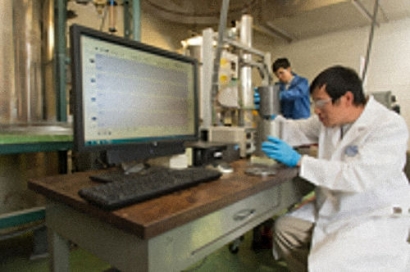
Market players are adopting more sustainable ways of storing thermal energy than before. Many startups have entered the market and introduced sustainable ways of thermal energy storage. Companies are targeting new geographic locations for their projects.
The concept of thermal energy storage has been practiced by many companies all over the globe. It is one of the conservative methods of consuming energy. There are several technologies for energy storage. Many companies are developing more ways than before to conserve energy. Market players are expanding their projects in new geographical areas as they see huge potential in new locations. There has been an entry of several startups in the last few years in the market. Some of the companies are Stash Energy, Axiom Energy, Highview Power, Phase Change Energy Solution, and Skyven Technologies. According to the report published by Allied Market Research, the global thermal energy storage market is expected to reach $8.86 billion by 2023. Companies are following many trends to withstand other competitors and capture major part of market. Some of the trends are-
Market players are developing methods to offer green thermal energy storage. Phase change material (PCMs) are synthetic polymers produced from petrochemicals. But companies are trying to develop a more stable and sustainable materials than before. Recently, there was a development by Department of Energy's Argonne National Laboratory’s scientists in the U.S. regarding a thermal energy storage system for industrial use. It can store and capture wasted heat for later use. The device was developed by scientists, and it stores and releases latent heat by using specific kind of molten salts which act as phase-change materials. While molten salts are effective as phase-change materials, they have a drawback in terms of poor thermal conductivity. Due to this drawback, it takes too long for molten salts to absorb and release energy. The scientists are developing a plan to overcome this problem. They are devising a method to integrate the phase-change materials with another high-thermal-conductivity material. They are planning to seal the composite material system into a cylindrical module and then bath in inert gas. The heat stored in the module can be further used to heat water to create steam.
Many companies are planning to expand their presence all over the globe to target more customers in the thermal energy storage market. Sterling and Wilson, a company that deals in Hybrid Energy Storage (HES), is developing a strategy to expand its business in Africa, South East Asia, Indian subcontinent, and Latin America. The company is working on multi-million projects in these regions. The company has plans to expand its hybrid energy storage project, which is a mixture of solar, wind, gas, diesel, and thermal energy storage. The company is aiming to promote non-conventional energy. In Africa, the company is also thinking about expanding its market because many power generation companies have been switching to renewable ways of generating energy.
Companies are also developing alternatives to optimize energy utilization. EnergyNest, a thermal battery company, is developing an energy system to maximize the value of the energy. The technology is flexible, modular, and built for attaining sustainable energy. The main work of the technology is to store thermal energy within a solid-state material to keep the thermal energy intact. The company provides a team of experienced engineers, scientists, and business professionals. They help in providing customized solutions. The company promises that the thermal battery technology responsibly uses intermittent energy, which helps in balancing the power grid and ensures a clean future for the people using the energy.
Many startups are also entering the thermal energy storage market. Axiom Energy is one of those companies. It is an energy storage company that provides energy management solutions. It helps in reducing business risks and operational costs for commercial buildings and supermarkets with high refrigeration-based energy loads. The product acts as a solution that uses existing refrigeration systems to store thermal energy during off-peak times. The product is controlled by a software which optimizes the refrigeration battery's charge cycle by storing refrigeration when energy cost is lowest. Another company is Sunamp. It manufactures heat batteries. They provide packaged storage of heat energy that uses PCM. The company also developed a product that can store excess electricity from Solar PV array in the form of heat.
Stash Energy, a thermal energy storage technology developer, developed a system that works with heat pumps to store energy thermally. It helps in avoiding purchase of expensive power during peak times. The stored energy can be utilized to reduce the peak electricity consumption for the heating load of the building or a house. Malta, a thermal energy storage system developer, is developing a system for grid applications. The company claims that the system can hold energy for more than six hours. Also, it offers more than 20 years of charging cycles. The system gets power from fossil fuel plants and other renewable sources that drive a thermal energy pump. Then, it produces heat and cold energy.
Pratik Kirve is writer, blogger, and sport enthusiast. He holds a bachelor degree in Electronics and Telecommunication Engineering and currently working as a Sr. Specialist - Content Writer at Allied Analytics LLP. He has avid interest in writing news articles across different verticals. When he is not following updates and trends, he spends his time reading, writing poetry, and playing football.
Photo: Argonne researchers received funding from the U.S. Department of Energy SunShot Initiative to scale up and demonstrate their novel thermal energy storage system, which efficiently stores solar energy as heat for later use generating electricity. Total project funding is $1.6 million and includes an industry cost sharing arrangement.

